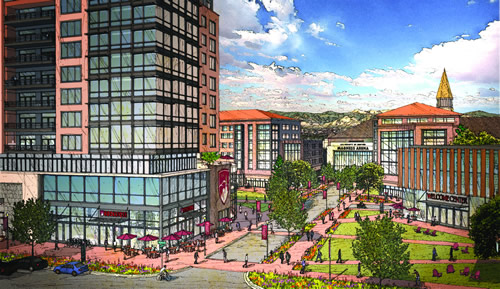The University of Denver Unveils Growth Plan
The University of Denver (DU) in Denver, CO, recently unveiled “The Denver Advantage Campus Framework Plan.” The plan consists of multiple steps that are aimed at building a larger, more active sense of community at DU.

For the first step of the Framework Plan, it was recently announced that there would be three new buildings constructed: a campus commons, a residence hall for first-year students, and a career achievement center. Construction for the first step begins this summer, and will be completed in the autumn of 2020.
Some of the future plans for the DU campus also include more affordable student housing, expanded dining and retail options, and the possible inclusion of a hotel to serve the campus community. There is also planned future collaboration with the neighborhoods surrounding the campus.